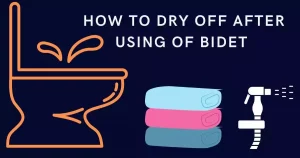can a bidet cause plumbing problems

Bidets are revolutionizing the way we clean ourselves after using the bathroom. However, it is important to be aware that bidets can cause plumbing problems depending on the type of bidet you purchase and the installation process.
If a bidet is installed incorrectly, it can lead to water damage in the bathroom or clogs in the plumbing. Additionally, if the bidet is not properly serviced, there could be water contamination or pipe damage.
It’s crucial to ensure that your bidet is installed correctly and serviced regularly to avoid these potential issues.
plumbing infrastructure for bidet operation
Bidets are like magical water fountains that help you stay clean and fresh. They rely on a steady stream of water to do their job well. But there’s a secret to making them work perfectly:
water pressure. Water pressure is like the key that unlocks the magic of bidets. To make sure your bidet works its magic, it needs just the right amount of water pressure.
Bidet experts say that the pressure should be between 20 and 75 pounds per square inch (psi). If the pressure is too low, the water might trickle out weakly. But if it’s too high, you might get a splashy surprise or even damage your bidet.
But water pressure isn’t the only thing that matters. The plumbing in your bathroom plays a big role too. You need to make sure everything is connected properly. Bidets need a special connection called a T-valve that connects to your toilet’s water line. This special connection makes sure the water flows smoothly from the tank to the bidet.
Now, here’s another puzzle for you:
- Can your plumbing handle all this?
- Will it be strong enough?
Don’t worry! You just need to make sure your plumbing can handle the extra work without causing any problems for other fixtures in your bathroom.
One smart idea is to have shut-off valves near your bidet. These valves will make it easy to turn off the water if you ever need to fix something.
Different Bidet Models and Their Potential Impact on Plumbing Systems.
Bidets come in different types, each with its own unique design and functionality. They can be a bit confusing, but don’t worry—I’ll explain it in a way that’s easy to understand!
One type of bidet is called a standalone bidet. It’s like having a separate sink just for cleaning yourself after using the bathroom. Standalone bidets need their own plumbing connections, including extra pipes and fittings.
If you want warm water, you’ll also need a separate hot water supply. Standalone bidets are great if you want a dedicated bidet fixture, but keep in mind that installing one might require some changes to your plumbing system.
Another type of bidet is the bidet toilet seat. This is a special seat that you can attach to your existing toilet. Bidet toilet seats have a nozzle that sprays water for cleaning. They’re really convenient because you don’t need to make major changes to your plumbing system.
Installing a bidet toilet seat usually involves connecting it to the existing plumbing of your toilet, which is usually easier than installing a standalone bidet. However, it’s important to make sure that your toilet and plumbing fixtures are compatible with the bidet seat you choose to avoid any problems in the future.
Backflow Prevention: Safeguarding Bidet Installations
Backflow prevention devices are like secret agents that protect our plumbing system from danger. They are an important part of bidet installations and keep our water clean and safe. Their mission is to stop water from flowing the wrong way and keep our supply free from any dirt or germs.
When bidets work together with our plumbing system, backflow prevention becomes even more important because it keeps us healthy and safe.
Imagine check valves or backflow preventers as powerful superheroes that fight against bad water. They only let water flow in one direction, so there’s no chance for dirty water to sneak in.
Even if the water pressure suddenly drops or tries to go the wrong way, these devices jump into action and stop any connection that could be dangerous. They make sure our water stays clean and fresh.
It’s really important to install these devices correctly according to the rules and regulations of plumbing. This way, they can do their job perfectly and protect us from any trouble.
Bidet Compatibility: Ensuring a Perfect Fit
People are curious about whether they can be used with different plumbing setups and fixtures. We often wonder how well bidet models work with existing plumbing systems.
The type of bidet being installed and the current state of the plumbing system both affect compatibility. If a bidet requires a dedicated water supply line, it may need additional modifications if the current setup can’t handle it.
Similarly, bidets that need a power source might require electrical connections that aren’t available in all plumbing setups. Incompatibility issues can also arise with fixtures like toilets, which may need to be removed or adjusted during installation.
That’s why it’s important to carefully evaluate your plumbing system when choosing a bidet model. This ensures a smooth installation without any problems later on.
But compatibility isn’t just about installation requirements. It also involves considering the overall infrastructure. Factors like water pressure play a big role in how well bidets work with our home’s pipelines. Each bidet model has an ideal range of water pressure for optimal performance. So it’s important to take this into account. Plumbing systems with low or high water pressure levels could affect how well bidets function.
It’s important to consider other factors like size and capacity when evaluating hot water heaters in relation to bidets, especially those with temperature control features that require generous supplies of hot water. This can be another challenge that requires our attention: ensuring an adequate provision exists for heating capabilities alongside considerations pertaining to capacity and dimensionality.
Bidet Maintenance Tips: Prevent Plumbing Issues.
Regular maintenance is crucial to avoid plumbing issues related to bidets. Cleaning the bidet regularly is essential for proper functioning.
To clean the bidet, use a mild soap and water solution to gently wipe down all surfaces, paying special attention to the nozzles and control knobs. To avoid damaging the delicate components, use a non-abrasive cloth or sponge.
Additionally, inspect the plumbing connections of the bidet frequently to identify any leaks or drips that may have developed over time. Take immediate action if any signs of leakage are found to prevent further damage and minimize water wastage.
Another important aspect of bidet maintenance is ensuring an uninterrupted water supply for optimal functionality. Regularly checking and monitoring water pressure levels is crucial to avoid deviating from the manufacturer’s recommendations.
Insufficiently low water pressure can impair performance, while excessive pressure can strain your plumbing system. In cases of suboptimal pressure, installing a pressure regulator can help maintain consistent and appropriate levels.
Furthermore, it’s important to routinely inspect water supply lines and connections for signs of wear or damage to prevent leaks or bursts from occurring unexpectedly.
Plumbing Problems with Bidet Installations: Identifying Issues.
Leaking is a common problem that can happen with bidets. It’s usually caused by faulty connections or a damaged supply line.
If the bidet doesn’t have a proper seal or has loose connections, water can leak into unwanted areas like floors and walls. To avoid this problem, make sure you follow the manufacturer’s instructions carefully during installation and check all connections are tight.
Another problem that can happen with bidets is low water pressure. Sometimes, your plumbing system may not provide enough water pressure for your bidet to work well. This can result in weak sprays that don’t clean effectively.
To fix this problem, you need to check your bidet’s water supply requirements and consider installing a pressure boosting system or expanding your water line. This will ensure that your bidet always has enough water pressure to keep you clean and fresh.
Bidet Installation Benefits: Why Hire a Pro?
The task of installing a bidet, although seemingly straightforward, requires thinking about the many advantages that come with hiring a skilled professional plumber.
One of the most important benefits is their expertise in this area. These professionals have the necessary knowledge and experience to understand the details and complexities of plumbing systems, ensuring that the bidet is installed carefully to minimize leaks and other plumbing issues.
Professional plumbers can also be very helpful in choosing the best bidet model and providing advice on maintenance and care.
Hiring a professional plumber guarantees a job done with precision and skill. These experts have the necessary tools and equipment to complete the installation quickly and efficiently.
They are also familiar with building codes and regulations, ensuring that the bidet installation is compliant and avoiding any legal issues or conflicts with homeowners’ associations.
By investing in professional installation services for your bidet, you can save time and avoid potential headaches, allowing you to enjoy all the benefits of using a bidet without worrying about plumbing problems.
Bidet Troubleshooting: Quick Fixes for Plumbing Problems.
Bidet-related plumbing issues can sometimes be confusing and frustrating for homeowners. One common problem is weak or unpredictable water flow from the bidet.
This can be caused by various factors, such as clogged filters or valves, low water pressure, or a faulty bidet unit. To address this problem, it’s important to carefully check the filters and valves for any debris or blockages that could affect their function. Cleaning them thoroughly can help resolve the issue.
Additionally, adjusting the water pressure in your plumbing system might improve the performance of your bidet. However, if these troubleshooting steps don’t work, it’s best to seek help from a professional plumber who can assess the situation and fix any malfunctioning components.
When it comes to bidet installations, leaks can sometimes be an unwelcome surprise. These sneaky culprits can occur in various areas, such as the connections between the bidet and its water supply line or even within the internal components of the bidet itself.
If you encounter such leakage issues, it’s important to thoroughly inspect all connections to ensure they are tightly secured and properly sealed to prevent any unwanted drips. If you notice any signs of wear or damage in these connections, it may be necessary to replace certain parts to resolve the problem.
It’s also a good idea to carefully examine every part of the bidet for any cracks or defects that could be causing leaks.
In some cases, applying sealant or plumber’s tape to vulnerable connection points can effectively fix minor leaks.
However, it’s important to note that certain leaks may be more stubborn or complex, requiring the expertise of a professional plumber. Seeking professional help will not only prevent further damage to your bidet and plumbing system but also bring peace and tranquility back to your home.
FAQs- Can bidet Cause plumbing issues?
Q: What is a bidet and how does it work?
A: A bidet is a special bathroom fixture that uses water to clean your private areas after you use the toilet. It helps you feel fresh and clean.
Q: Can I install a bidet by myself?
A: While it might seem exciting to try installing a bidet on your own, it’s better to ask a professional plumber for help. They have the skills and knowledge to install it correctly and avoid any problems.
Q: What do I need for bidet installation?
A: To install a bidet, you need to have access to water and a way for the dirty water to drain away. It’s important to have the right plumbing setup and enough water pressure for the bidet to work properly.
Q: What types of bidets are there?
A: Bidets come in different styles. Some are like separate fixtures that look like small thrones. Others are special toilet seats that can clean you. There are also handheld sprayers that give you control over how you clean yourself. Each type has its own features and installation requirements.
Q: How can I prevent water from flowing back when using a bidet?
A: To make sure the water stays clean and doesn’t flow back, you can use special devices like check valves or vacuum breakers. These devices help keep the water flowing in the right direction and prevent any contamination.
Q: Can I use a bidet with my current bathroom plumbing?
A: You need to make sure your plumbing system works well with a bidet. A plumber can help you figure out if your plumbing is compatible with a bidet.
Q: How do I take care of my bidet?
A: To keep your bidet working well, you need to clean it regularly, check for leaks, and make sure all the parts work properly.
Q: What kind of plumbing problems can happen with a bidet?
A: Sometimes, bidets can cause problems like leaks, low water pressure, clogs, or backflow. But don’t worry! If you install your bidet carefully and take good care of it, you can avoid these problems.
Why should I hire a professional plumber to install a bidet?
Hiring a professional plumber for your bidet installation ensures a flawless execution and protects you from potential plumbing problems. Plumbers have extensive experience and knowledge, making them experts in handling unforeseen challenges that may arise during the installation process. They possess the wisdom and skills needed to conquer any plumbing troubles, ensuring a successful and hassle-free installation.
What should I do if something goes wrong with my bidet?
If you encounter any issues with your beloved bidet, seek the guidance of a proficient plumber. These plumbing experts will provide you with valuable advice and practical solutions to fix any problems that may arise. Embrace their wisdom and allow them to navigate towards a resolution with unwavering efficiency, ensuring your bidet continues to bring you blissful cleanliness.
Remember, professional plumbers are there to help you every step of the way!






